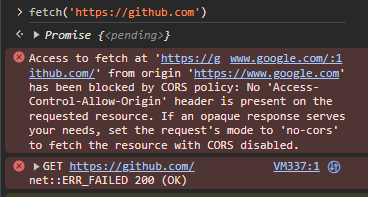As web development evolves, ensuring your application remains secure is critical, especially when dealing with APIs that interact with client-side and server-side components. One of the major security features in modern web development is Cross-Origin Resource Sharing (CORS), a mechanism that allows browsers to safely make requests across different domains. However, while CORS controls the flow of requests between domains, securing API requests involves much more. From authentication to encryption, several layers ensure that your data and API remain safe from malicious threats.
In this post, we’ll dive into what CORS is, why it’s important, how to configure it properly, and how to implement best practices for securing your API requests effectively.
What is CORS?
Cross-Origin Resource Sharing (CORS) is a security feature implemented by browsers to prevent unauthorized domains from accessing resources on a different domain. If a website hosted on one domain (let’s call it example.com) tries to request resources (such as data) from a different domain (api.example.com), the browser will block that request unless the target domain explicitly allows it.

Why CORS Exists:
Browsers implement the Same-Origin Policy (SOP) by default, which restricts web pages from making requests to a different domain than the one that served the web page. While this is a useful security feature, it can be restrictive when you want to make requests across different services (e.g., connecting a front-end application to a back-end API hosted on another domain). CORS allows servers to explicitly specify which domains are permitted to access their resources.
How CORS Works:
When a client (usually a browser) makes a request to a different origin (cross-origin request), the browser sends an OPTIONS request before the actual request, called the preflight request. This preflight request asks the server if the actual request is allowed.
If the server accepts the request, it will respond with CORS headers, such as:
Access-Control-Allow-Origin: Specifies which domains are allowed to access the resource. For instance,Access-Control-Allow-Origin: https://example.comallows onlyexample.comto access the resource.Access-Control-Allow-Methods: Lists the HTTP methods (GET, POST, DELETE, etc.) that are allowed for cross-origin requests.Access-Control-Allow-Headers: Specifies which headers can be included in the actual request.
Here’s an example of CORS headers in a server response:
httpCopy codeAccess-Control-Allow-Origin: https://frontend.com
Access-Control-Allow-Methods: GET, POST, PUT, DELETE
Access-Control-Allow-Headers: Content-Type, Authorization
Example CORS Scenario:
Let’s say your website https://frontend.com needs to fetch data from https://api.com. If https://api.com allows this request, it will include the following headers in its response:
httpCopy codeAccess-Control-Allow-Origin: https://frontend.com
Without this header, the browser will block the request, preventing cross-origin access.
Why CORS Matters for API Security
CORS is an essential tool for controlling which domains can interact with your APIs. Without proper CORS configuration, attackers can exploit your APIs. Here’s why it matters:
- Protecting User Data
By restricting cross-origin access, CORS helps prevent unauthorized websites from accessing sensitive data, such as user information or payment details. - Preventing Cross-Site Request Forgery (CSRF)
CSRF attacks occur when a malicious website tricks the user into performing actions on another website where the user is already authenticated. CORS reduces the risk by ensuring that requests coming from unauthorized domains are blocked. - Mitigating Cross-Site Scripting (XSS) Attacks
XSS attacks allow malicious scripts to run in a user’s browser. Proper CORS headers can prevent these attacks by ensuring that only trusted sources can execute scripts that interact with your API.
Securing API Requests
Securing your API requests is crucial to prevent unauthorized access, data manipulation, and other types of attacks. There are several layers of protection you can implement:
1. Authentication and Authorization
The first step in securing your API is ensuring that only authorized users can access it. Authentication verifies the identity of users, while authorization ensures they have the necessary permissions.
- JWT (JSON Web Tokens): JWTs are often used in modern web applications for handling authentication and authorization.
- OAuth2: A more comprehensive authorization framework, OAuth2 is often used in scenarios where third-party access to APIs is needed.
- API Keys: For simpler applications, API keys can be used to control access.
2. Rate Limiting
To protect your API from abuse or overuse (such as DDoS attacks), implement rate limiting. This restricts how many requests a user can make in a specified time period (e.g., 100 requests per hour).
3. Input Validation
Always validate incoming data to prevent attacks such as SQL injection and cross-site scripting (XSS). Sanitize user inputs to ensure they do not contain harmful content.
4. HTTPS Encryption
Ensure that all API requests are transmitted over HTTPS. This encrypts data in transit, preventing attackers from intercepting or tampering with sensitive information.
5. CORS Configuration
Properly configure CORS on your API to ensure that only trusted domains can make requests. This is a key step in protecting your API from unauthorized access by third-party websites.
By following these practices, you can significantly reduce the risk of your API being compromised. To learn more about securing APIs in back-end development, check out this guide on best practices for securing APIs.
Best Practices for Handling CORS in Full-Stack Applications
CORS isn’t just about enabling it on your server; it’s about handling it properly across different layers of your application. Here are a few best practices to consider:
1. Limit Allowed Origins
Only allow trusted origins to interact with your API. Instead of allowing all origins with *, specify trusted domains using the Access-Control-Allow-Origin header.
2. Use Credentials Carefully
If your API requires cookies or HTTP authentication, set the Access-Control-Allow-Credentials header to true. However, remember that the Access-Control-Allow-Origin header cannot be set to * when using credentials.
3. Enable CORS on Specific Endpoints
You don’t need to enable CORS for every endpoint. Enable it only for endpoints where cross-origin requests are necessary, such as those that interact with the front-end of your application.
4. Regular Testing
Testing your CORS settings is essential. Use tools like Postman or browser developer tools to check how your API responds to cross-origin requests from different domains.
Image Placement Suggestions:
- First Image: Add a diagram explaining the flow of a CORS request (pre-flight request, response headers, etc.) right after the “What is CORS?” section.
- Second Image: Include a screenshot or diagram showing how to configure CORS in a Node.js server after the “Setting Up a Secure Node.js Server” section.
Setting Up a Secure Node.js Server with CORS
When building an API with Node.js, it’s crucial to configure CORS and security measures properly. Here’s how you can set up a basic secure Node.js server with CORS:

Step 1: Install Required Packages
Start by installing the necessary packages:
bashCopy codenpm install cors express
Step 2: Configure CORS in Node.js
Use the cors middleware to manage CORS settings:
javascriptCopy codeconst cors = require('cors');
const express = require('express');
const app = express();
const corsOptions = {
origin: 'https://trusted-website.com',
methods: ['GET', 'POST'],
allowedHeaders: ['Content-Type', 'Authorization'],
};
app.use(cors(corsOptions));
app.get('/api/data', (req, res) => {
res.json({ message: 'Secure data' });
});
app.listen(3000, () => {
console.log('Server is running on port 3000');
});
Step 3: Secure Your Routes
Make sure your routes are authenticated and validate incoming requests:
javascriptCopy codeapp.use((req, res, next) => {
if (!req.headers.authorization) {
return res.status(403).json({ message: 'Forbidden' });
}
next();
});
For a complete guide on setting up your first Node.js server, check out this post on mastering the basics of setting up your first Node.js server.
Quote:
“Security isn’t just about preventing bad things from happening—it’s about designing systems in a way that minimizes the risk of failure while keeping users’ data safe.” — John Doe, Security Expert
Conclusion
Understanding CORS and securing your API requests are essential parts of web development. By properly configuring CORS, ensuring secure API practices, and following best practices for authentication, rate limiting, and input validation, you can build a more secure application that protects your users’ data and minimizes risks.
If you’d like to dive deeper into REST APIs and securing them, check out this guide on understanding HTTP methods and REST APIs for back-end development.









